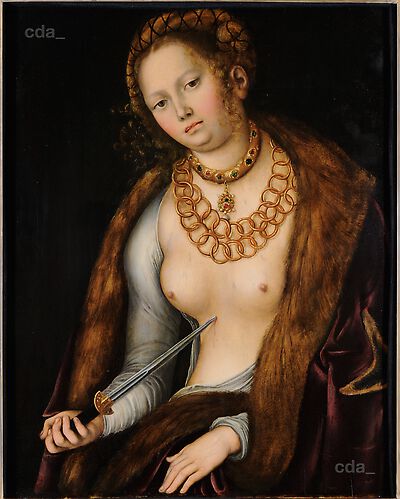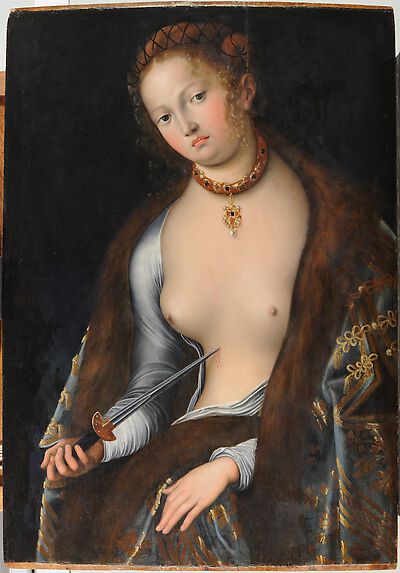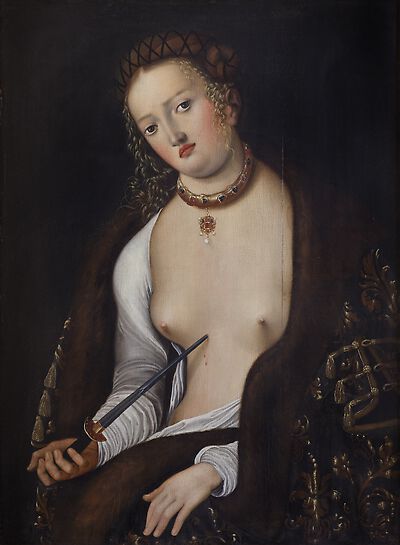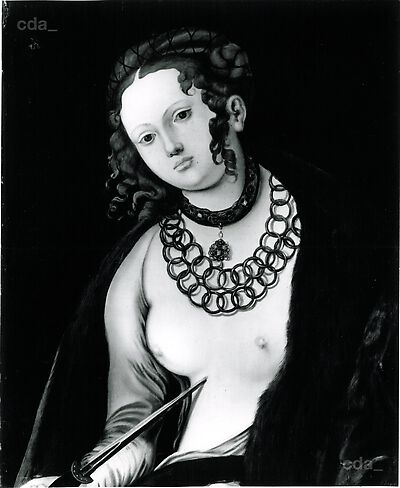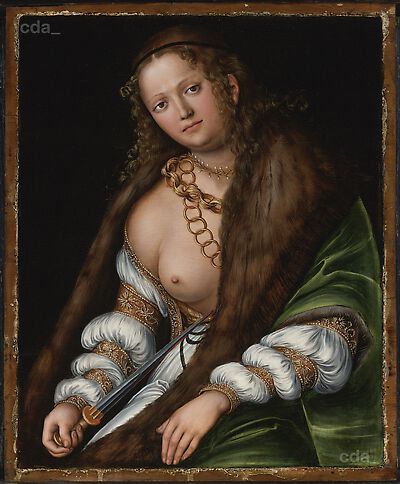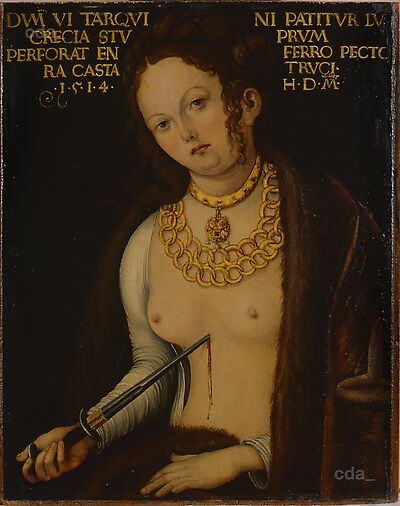The painting depicts the classical heroine Lucretia as a seated half-length figure in contemporary dress and accessories.
Lucretia's hair is pinned up and she inclines her head slightly to the left side of the image, while looking directly at the viewer. She is wearing a white undergarment, which reveals her
The painting depicts the classical heroine Lucretia as a seated half-length figure in contemporary dress and accessories.
Lucretia's hair is pinned up and she inclines her head slightly to the left side of the image, while looking directly at the viewer. She is wearing a white undergarment, which reveals her torso and a fur-trimmed cloak is draped over her shoulders. Her left hand rests on her lap and she holds a long dagger in her right hand. This is pointed slightly upwards. She wears a chain with a pendant around her neck, as well as two large linked chains. The background is dark.
According to the legend Lucretia lived in the 6th century BC and was the beautiful and virtuous wife of the roman Collatinus. The roman King's son - Sextus Tarquinius fell in love with her. During a stay in her house Sextus threatened to kill her and shame her honour if she did not surrender to him. After the rape Lucretia had her father and husband vow vengeance and then she stabbed herself. The event led to an uprising in which the royal family was overthrown and the Roman Empire became a Republic. Depictions of Lucretia who was seen as the epitomy of female virtue, chastity, fidelity and honour enjoyed great popularity, particularly in the 16th century.
[Literature: Bierende 2002, Follak 2002, Livius 1909]
